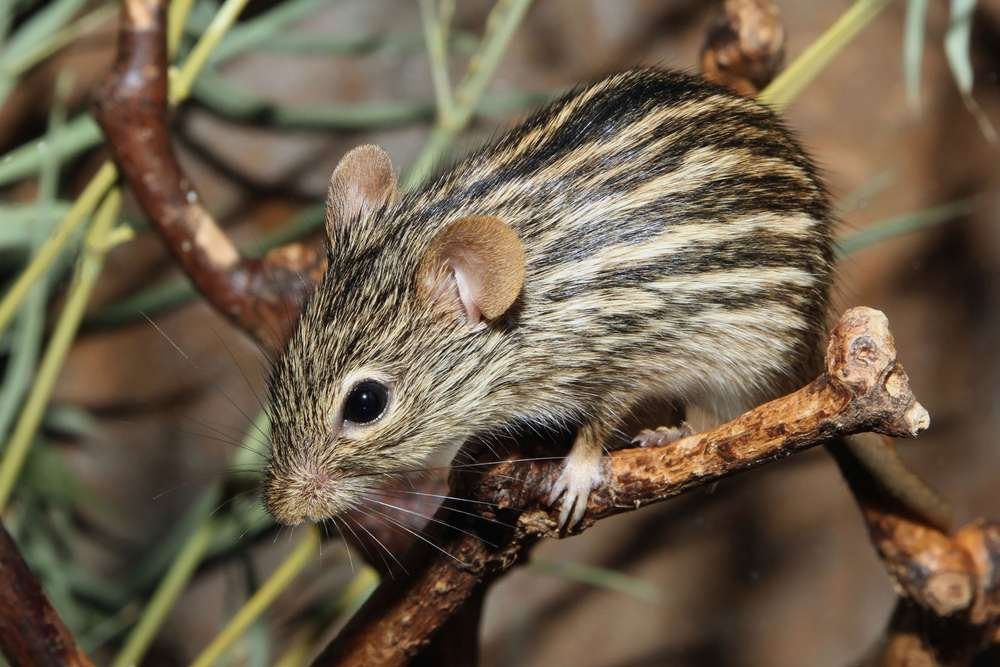Rosevear’s striped grass mouse
- Lemniscomys roseveari
- IUCN Status: Least Concern
- Trend: decreasing

- Kingdom: Animalia
- Phylum: Chordata
- Class: Mammalia
- Order: Rodentia
- Family: Muridae
- Genus: Lemniscomys
Share:
General Information
The Rosevear’s striped grass mouse (Lemniscomys roseveari) is a near-endemic small rodent found in Zambia and possibly Angola. It is named after Dr. Donovan Rosevear, a British mammalogist who first described the species in 1980.
Fun Facts!
Rosevear’s striped grass mice are very social animals. They live in groups of up to 10 individuals. These groups are led by a dominant male and female. Rosevear’s striped grass mice cooperate with each other to find food, raise their young, and defend themselves from predators.
Rosevear’s striped grass mice are very good at hiding. They have a coat of brown or gray fur that helps them to blend in with their surroundings. They also have a habit of freezing in place when they are threatened, which makes them even more difficult to see.
Rosevear’s striped grass mice are very prolific breeders. A female Rosevear’s striped grass mouse can have up to 6 litters of pups per year, with each litter containing up to 10 pups. This means that Rosevear’s striped grass mice can quickly repopulate their populations if they are threatened.
Rosevear’s striped grass mice are excellent climbers. They have sharp claws and a long tail that helps them to balance. This allows them to climb trees and shrubs to find food and to escape predators.
Description
- Length: 10 cm
- Tail Length: 15 cm
Ecology and Behaviour
Rosevear’s striped grass mice are nocturnal animals and spend most of their time foraging for food. They eat a variety of plants and insects. They are social animals and live in groups of up to 10 individuals. They are also good swimmers and can often be found near water. It is an important part of the ecosystem in Zambia, helping to control insect populations and dispersing seeds.
Conservation
Rosevear’s striped grass mice are not considered to be threatened, but their populations are declining in some areas due to habitat loss and fragmentation.
Distribution and Habitat
It is found in a variety of habitats, including forests, woodlands, and savannas.
Interaction with humans
No donation to this project yet.
| M | T | W | T | F | S | S |
|---|---|---|---|---|---|---|
| 1 | 2 | 3 | 4 | 5 | 6 | 7 |
| 8 | 9 | 10 | 11 | 12 | 13 | 14 |
| 15 | 16 | 17 | 18 | 19 | 20 | 21 |
| 22 | 23 | 24 | 25 | 26 | 27 | 28 |
| 29 | 30 | 31 | ||||


